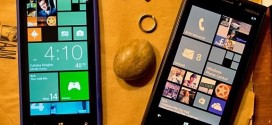While this website may be oriented towards Android, I do believe it is high time we take a brief look at what the competition is doing, especially when it is related to the topics at hand. Now it’s no big secret to anyone, or at least it shouldn’t be, that Nokia isn’t what they used to be. While at the beginning of the mobile phone era they were something fierce , they weren’t quite capable of keeping up with some of the more determined competitors. When the smartphone transition was made, they kept clinging to their old Symbian OS ( which was good enough in itself, but not quite at the level of the others ) and that ultimately led their buy-out by Microsoft.
While they still managed to provide acceptable results before, there are many those who would attribute their decline to their exclusive reliance on Microsoft’s Windows Phone platform as its only outlet in the smartphone world. Now more than one analysts agree that in order to gain a bit more advantage in this smartphone market, Nokia should orient itself towards the production of Android smartphones.
Pierre Ferragu of Bernstein Research urges that Nokia should “take the pill before one cannot afford to do so anymore … its exposure to the disappearing feature phone market and the lack of traction of Windows phones could cost Nokia a lot of cash in the near term, in restructuring, marketing/distribution support, and operational loses, which means it could be too late to address the problem in a couple of years”.
While Nokia’s partnership with Microsoft brought great expectations with it, it has proven to be anything but what either of the companies were hoping for, despite the recent facts being a bit more encouraging. The Finnish phone maker and the Windows Phone OS found on many of its devices are struggling to make the smartphone three-horse race Elop was talking about when unveiling the new strategy.
Still, Nokia continues to heavily rely on the feature phone sales to keep the finances in check, evidence to this being its most recent Ad Campaign for the S40-powered Nokia Asha 501. However, the feature-phone market has changed drastically. If once it was a pillar of Nokia’s dominance, it has also started crumbling. Even in the conservative Western Europe smartphone market the change has been obvious, area in which Nokia’s total shipments have dropped by 30% year-over-year.
At the current time, however, it is unclear what the cost would be for Nokia to dip its toes into the Android pool. On one hand, Microsoft has given licenses to Samsung, HTC and Huawei to make WP-powered devices of their own despite all of those also having Android smartphones. On the other hand, however, ever since day one and Microsoft, Nokia has stated that their partnership is quite different from that of Microsoft and other WP OEMs.
Time will tell whether or not Nokia will attempt to join the big world of Android. Personally, I’ll be looking forward to that moment and would gladly buy an Android smartphone from them.








